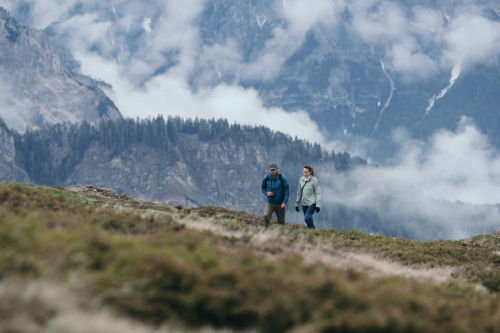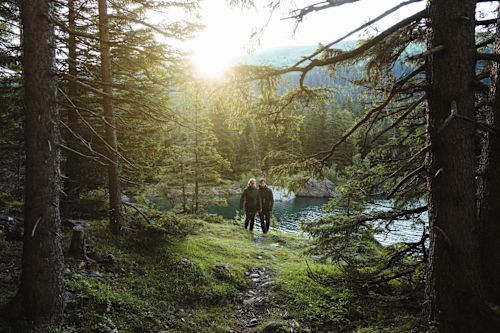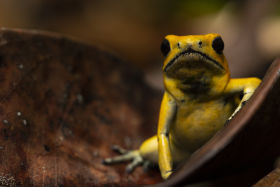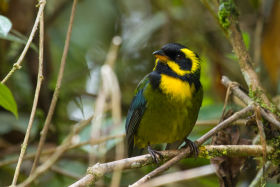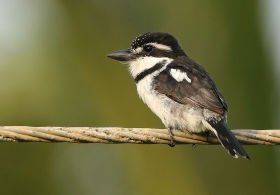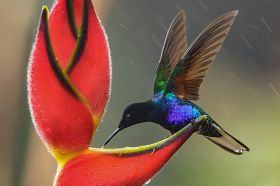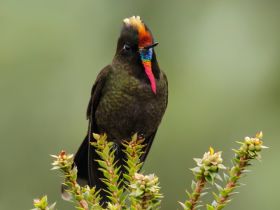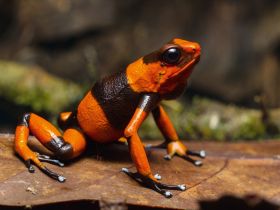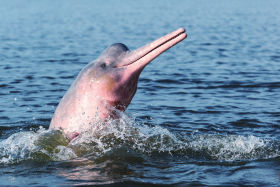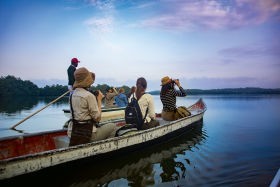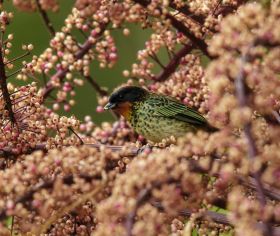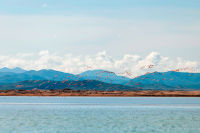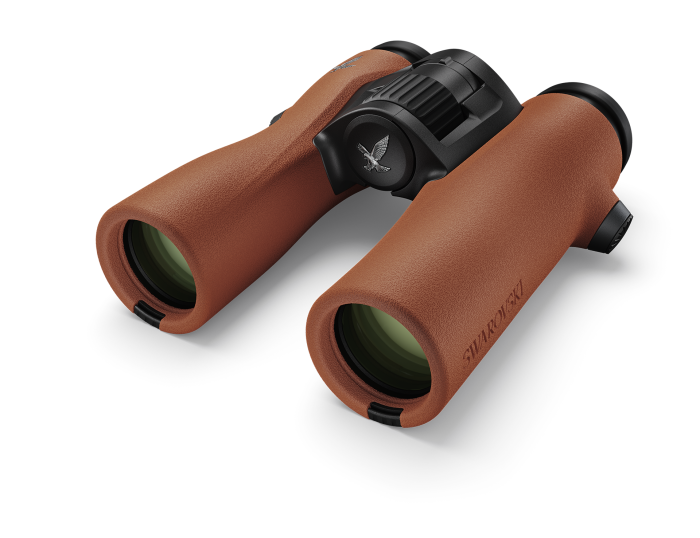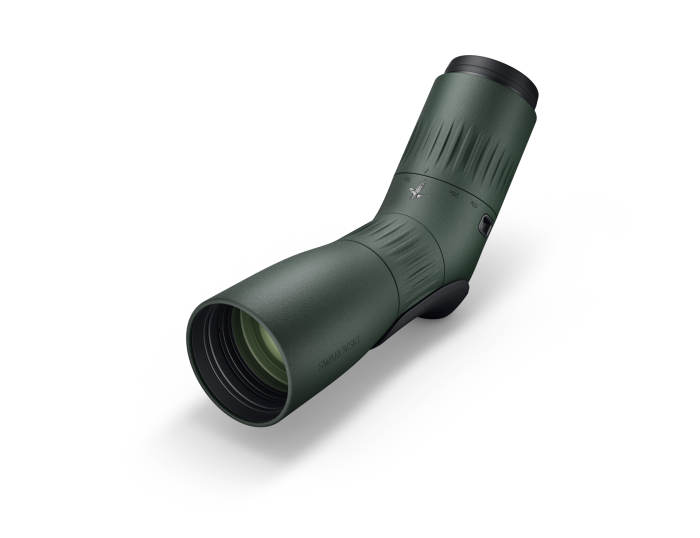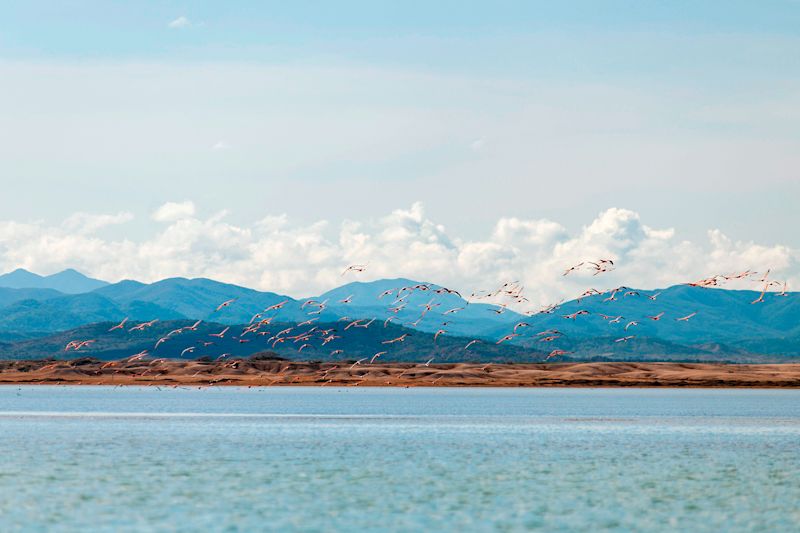FINDING HOPE AND A FUTURE IN ECOTOURISM IN ONE OF THE WORLD’S MOST BIODIVERSE COUNTRIES
There's no country on earth with more bird species than Colombia. The South American nation is home to nearly 2,000 species, around 20% of all bird species on the planet. From towering Andean peaks to the verdant Amazon rainforest, the sparkling waters of the Caribbean, to the untamed jungles of the Pacific coast, Colombia boasts a staggering range of habitats and ecosystems to explore. It's a paradise for birds and birders alike.
Yet, Colombia wasn't always the most accessible destination for bird-lovers. While international birders dreamt of ticking Gold-ringed Tanager, Buffy Helmetcrest, Santa Marta Parakeet, and more off their lists, native birders suffered the same frustrations. For decades, conflict denied them access to the most biodiverse corners of their own country and birding remained a niche pursuit enjoyed by biologists and researchers. Colombia may have been the land of birds, but it was far from being the land of birders.


Yellow-eared Parrot (Ognorhynchus icterotis), Buffy Helmetcrest (Oxypogon stuebelii) by Glenn Bartley
That began to change in the last decade.
Vast swathes of Colombia that had been off-limits to civilians started to open up, and birders could plan adventures in the Amazon, Eastern Plains, and Pacific jungles. Birding became synonymous with exploration and adventure, and a new generation of talented young birders came of age in a country that suddenly seemed full of possibilities. Birding in Colombia is an exciting new movement, fuelled by a sense of joy and discovery.
Carlos Mario Wagner has played a massive part in the development of Colombian birding culture. As the founder of the Colombia Birdfair in Cali, he's seen birding grow from an outsider pastime to one of the country's fastest-growing hobbies. "When I first started to go birding fifteen years ago, I would come out of the forest with binoculars, and people would look at me with suspicion. Now, instead of asking me what I'm doing, people ask what birds I've seen."
The Colombia Birdfair has gone from a niche convention to one of the most important dates in Colombia's cultural calendar. In the past couple of years, bird fairs have sprung up around the country; these days, you could practically schedule a visit to a different bird festival every weekend for a year, something that would have been unthinkable just ten years earlier.
Seeing foreigners’ enthusiasm to come and watch birds in their country has also become a source of pride for Colombians, long used to seeing their country stigmatized in international media. Many people see birds and biodiversity as a way of shifting that perspective and bringing more positive attention to Colombia.
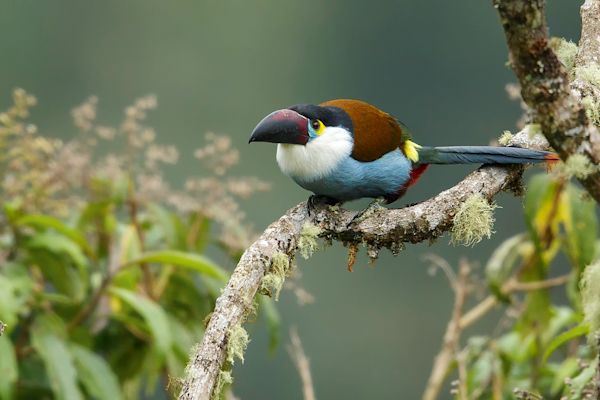
eBird's
Global Big Day
was an important catalyst for this national pride. Colombia has topped the charts every year since 2017, registering an astonishing 1,598 species in 2019. That's almost 15% of all the bird species on earth, seen in one country, in just one day. Perhaps more importantly, Colombians shared the third-highest number of checklists on the day; a testament to how much birding has grown in just a few years.
Black-billed Mountain Toucan (Andigena nigrirostris) by Glenn Bartley
The national tourist board – ProColombia – has also enthusiastically backed birding and ecotourism, funding ambitious documentaries about Colombian birds and positioning biodiversity squarely at the centre of their campaigns. International travellers landing in Bogota's El Dorado airport are now met with walls of photos of Colombian birds, frogs, and butterflies.
The cultural interchange generated between international birders and local enthusiasts has helped fuel the fires of the Colombian birding culture. Birding tourism has also generated new sources of income in rural communities.
The positive impact of birding and ecotourism
Michelle Tapasco and her family are an example of the impact of birding in rural Colombia. They operate Montezuma Lodge in the Western Andes, where over 600 species of birds have been recorded. Michelle always dreamed of being able to live sustainably in the mountains with her daughters, and birding tourism has helped her realize her dream: "Birding has given us the means to live without having to leave the countryside for the city, and has allowed us to conserve the biodiversity around us. It's become our life's work." Her daughters grew up around visiting birders and were inspired to study biology, forestry, and environmental engineering and work in birding tourism. One of them is now a top bird guide in the region.
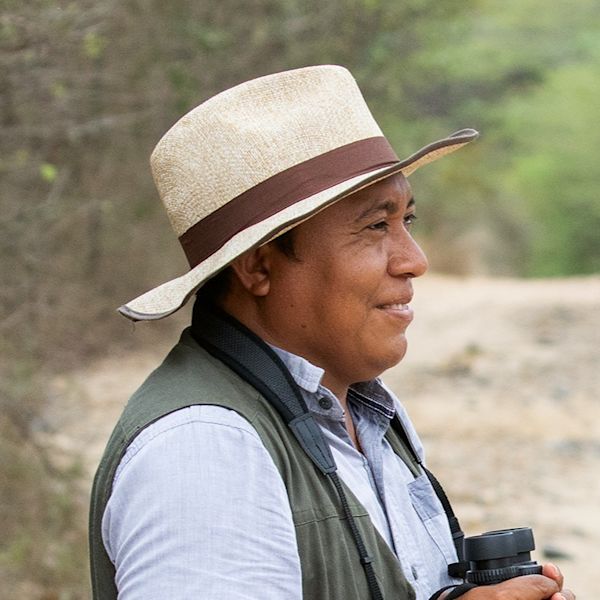
Professional guide
José Luis Pushaina
... tells a similar story from the desert peninsula of La Guajira on Colombia's Caribbean coast. He discovered birding eight years ago when he met Colombian guides bringing foreign birders to spot regional endemics like Vermillion Cardinal and Buffy Hummingbird.
He's is in no doubt that birding has changed his life and the lives of his Wayuu Indigenous community: "Birding tourism has been such an important tool to benefit the community. Everyone here who has participated in birding tourism has seen their living conditions improve in some way or another. It's changed a lot of people's lives." In a region like La Guajira, which suffers from high poverty rates, birding's economic impact has been invaluable.
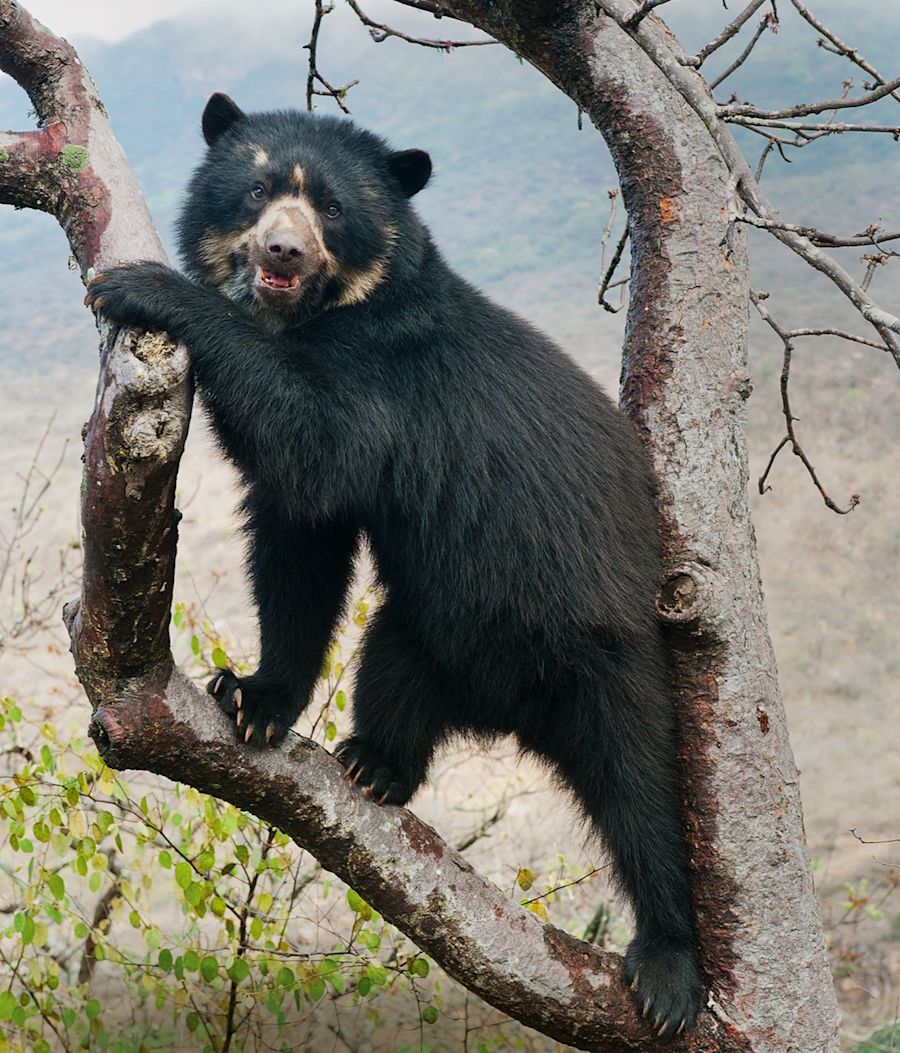
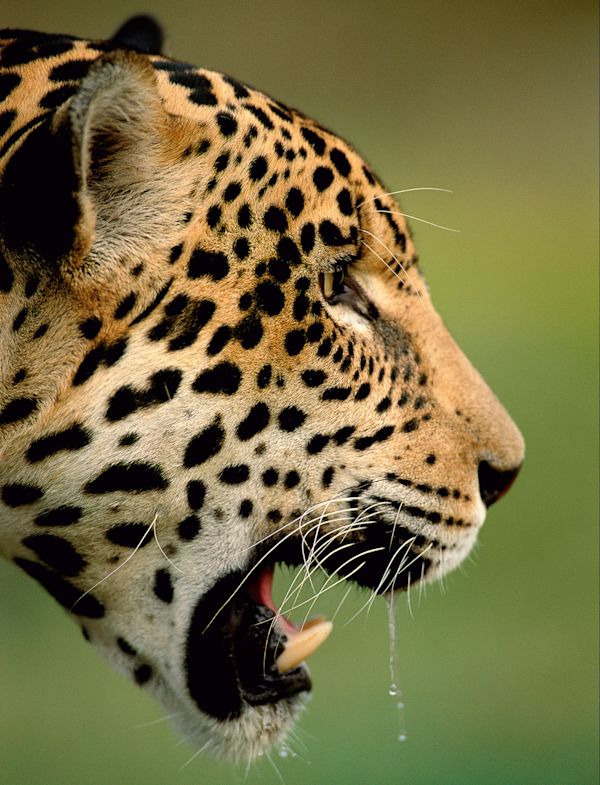
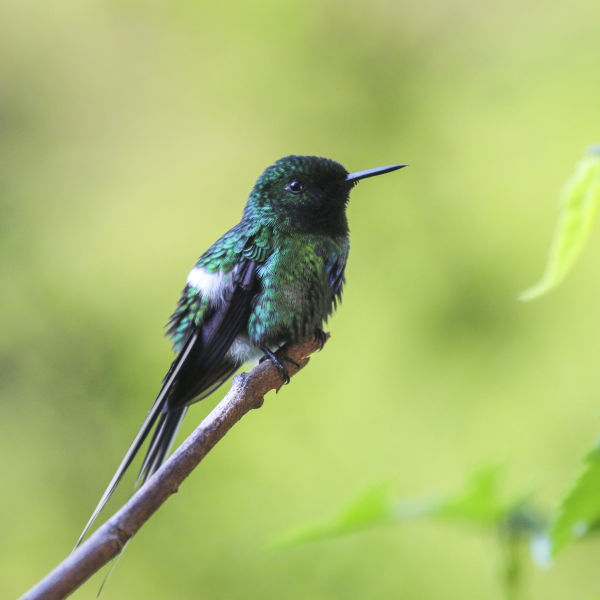
Incredible Biodiversity
Yet, while birding may form the initial spark of interest in Colombia for many international visitors, they soon learn that the country offers so much more than 2,000 bird species. By area, Colombia is the world's most biodiverse country. There are more species of orchids here than anywhere else on earth. The country occupies second place in plants, amphibians, butterflies, freshwater fish, third place in palm trees and reptiles, and fourth place in mammal diversity. Almost 10% of the planet's biodiversity is found in Colombia's forests, mountains, rivers, plains, and oceans.
As ecotourism in Colombia has grown, it has begun to broaden its horizons beyond birding. More and more people visit Colombia to spot poison arrow frogs, jaguars, spectacled bears, humpback whales, Orinoco caiman, and anaconda. The ecotourism boom is also aiding conservation efforts for many of Colombia's most vulnerable species.
Laura Miranda is the Director of the Cunaguaro Foundation, a conservation and ecotourism operation in the Eastern Plains region. She points to the Giant Otter as an example of a species that has benefitted from ecotourism: "Some people used to persecute the otters because they thought that they were a nuisance for eating all the fish. Now, they understand that they are one of the species that tourists are most excited to see, and the entire community supports their conservation. That's all thanks to tourism."
So much to discover in Colombia
Yet, it's not just biodiversity that makes Colombia stand out. The 'Land of 2,000 Birds' is also known as the Land of a Thousand Rhythms due to the incredible diversity of music and dance. Colombia is globally-renowned for the quality of its coffee, its growing gastronomic culture, world-class cycling routes, hand-crafted Indigenous products, and the friendliness of its people.
Increasingly, tour companies in Colombia are realizing the potential of combining birding and ecotourism with music, dance, coffee, and gastronomy. For instance, in the Coffee Region, you can take a morning birding walk followed by a guided tour of a coffee plantation and a lesson from an expert barista. In La Guajira, visitors can spot American Flamingos and Roseate Spoonbills in the cool light of dawn, and then visit a Wayuu Indigenous reservation to enjoy a traditional dance and learn the secrets behind weaving their artisanal 'Mochila' bags. Travellers to the Pacific coast can enjoy a whale-watching excursion followed by a menu of fresh local seafood and artisanal cocktails. They may even find time to spot a Sapayoa or Baudó Oropendola while they're at it. Birds might be the initial inspiration for many visitors to Colombia, but they soon realize that there's so much more to do and see.
Agencies offer a wide range of Colombian experiences
Nature Colombia is one of the agencies that have expanded its reach beyond birding in recent years. The company’s Commercial Director Luisa Fernanda Conto explains how demand has changed over the years: "When we started 15 years ago, 95% of our clients were hardcore birders. Nowadays, we get far more visitors who are interested not just in birds, but in a more complete experience."
In response to this shift, Nature Colombia now offers tours including a 12-day Poison Frog expedition and their newly-launched "Female Birders Flocking to Colombia" tour. The latter is exclusively for female birders and supports Colombian women working in tourism. Nowadays, their tours always include activities that highlight the best of Colombian culture alongside birding.
Luis Urueña, the founder of Manakin Nature Tours, also sees bird tourism as a gateway to a more complete Colombian experience. In his opinion, "ornithological tourism is about so much more than just coming to see birds; it's about being able to interact with communities, learn about culture, discover the gastronomy, and spend time with the people."
Birding and ecotourism in Colombia offer visitors the unique opportunity to explore one of the world's most biodiverse countries and be part of an inspiring new birding culture that is creating lasting and meaningful change. Nowhere on earth is the life-changing social and conservation impact of ecotourism more evident than Colombia, and there's never been a more exciting time to plan a trip to the land of birds, music, coffee, cycling, orchids, frogs, and just about everything else you can imagine.
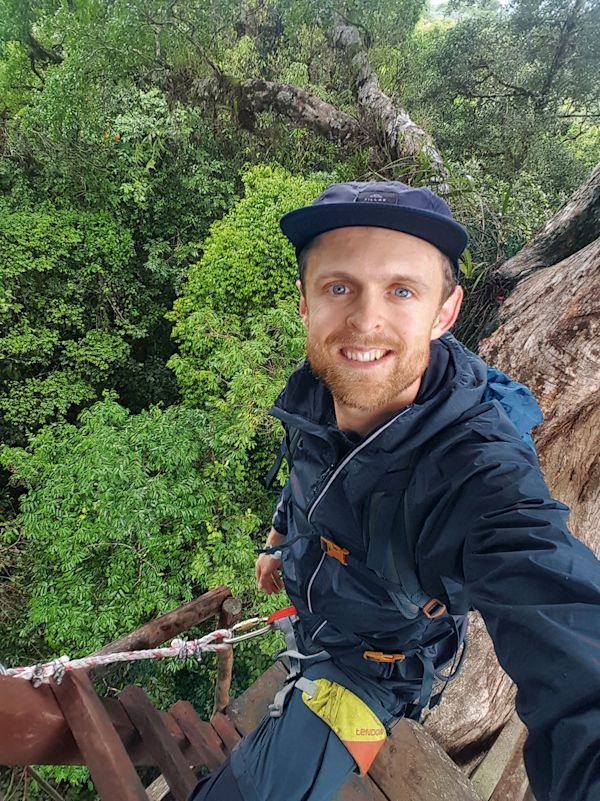
About
Chris Bell:
Chris Bell is an English writer and birder who has lived in Colombia since 2011. He has worked as the editor of Colombia’s biggest bilingual travel blog, The Colombia Travel Blog, and contributed content to Culture Trip, World Nomads, Uncover Colombia, National Geographic Traveler, The Bogota Post, and CNN. He currently works as Head of Content for WhereNext, a production company in Colombia, and hosts a birding video podcast on YouTube, The Birders Show. Birding is his greatest passion and he has travelled to all 32 Colombian departments, observing over 1,400 bird species along the way. Chris Bell relies on his NL Pure 8x42 for his birding adventures.

